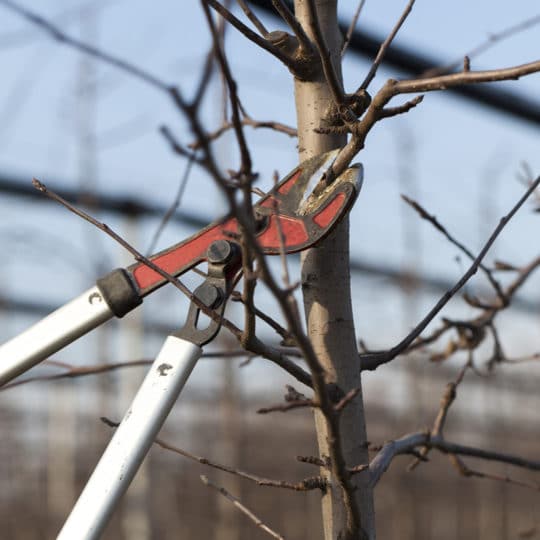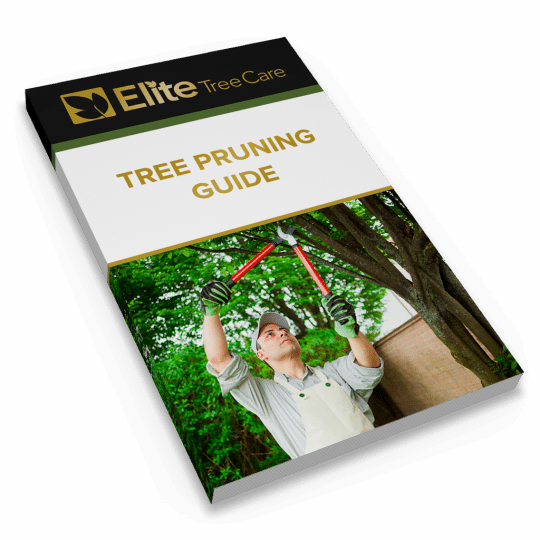Winter Tree Pruning
It’s the Most Beneficial Time of the Year
Posted
January 12, 2023

It’s about that time again! The leaves are gone. The first frost has…frosted. The trees and grass are dormant, so it’s a good time to start thinking about major tree work. Learn more about the winter tree pruning process and why this is the season to start.
What Pruning Helps
Properly pruning a tree has many benefits for the plant and its surroundings, including:
- Improves shape
- Strengthens structure and safety
- Promotes healthy growth
- Maximizes fruit production
- Prevents disease
Not only does pruning help the plant, but it rewards you with a lush landscape and less work than if you have to deal with disease and branch destruction.
There is a right and wrong way to prune. While you can always trim a dead or broken branch any time of year, winter is the best time for any major tree work.
Winter Tree Pruning
If you’ve been waiting for the right time to prune your tree, the time has come. Why winter?
- The lack of leaves makes it easier. Broken and diseased branches can’t hide on a bare tree. If you notice something off with a branch, it’s best to prune it before it becomes a problem. You can also see which branches crisscross and crowd each other. Prune these branches to help improve the structure and open up the canopy to allow more light and air to circulate.
- Disease is less likely to spread. Typically, pruning a tree that’s under attack by bacteria, fungi or parasites runs the risk of having this disease spread if not handled properly. Pruning during the winter lessens this risk since the cause is likely to be dormant or dead as well.
- There’s less stress on the plant and surroundings. Pruning triggers growth in active trees. A tree will want to quickly close any fresh cut. However, dormant trees are in no rush to heal or grow. There won’t be any delicate new growth to worry about until spring. Since the surrounding gardens and grass are also bare and dormant, you also won’t have to worry about disturbing any other plant while pruning.
- Eliminate any safety concerns. Broken and diseased branches become a hazard any time of year, especially in the seasons known for heavy storms. When you prune these branches, you have more control over where they fall and lessen the likelihood of a branch creating more damage to the tree and/or its surroundings. Cutting out the bad stuff also helps the tree grow stronger in the long run.
What You Shouldn’t Prune, Yet
Before you trim too much, be aware that some trees and plants are already gearing up for spring and shouldn’t be pruned right away—if you can help it. Plants that bloom in early spring may already have new buds formed before winter. Trimming these branches means fewer spring flowers. It’s best to wait until after they’ve flowered to do any pruning. However, if these branches are dead or diseased, prune away!
If the tree that needs pruning is too tall or its condition is too precarious, it’s best to call a professional tree service for assistance. You don’t want to risk your health and safety for a broken branch or pruning project. The situation may also call for tree removal, which is something you’ll want a licensed company to handle. Contact Elite Tree Care for a consultation on any of your tree or landscaping needs. Now is the time to take care of any major work to get your tree in shape for spring.

Download Your FREE Tree Pruning Guide
Learn how, when, and how much to trim or prune your trees to maximize their health and beauty. This guide covers the factors that go into tree trimming (pruning) and will help you make a more informed decision about hiring a professional tree service.